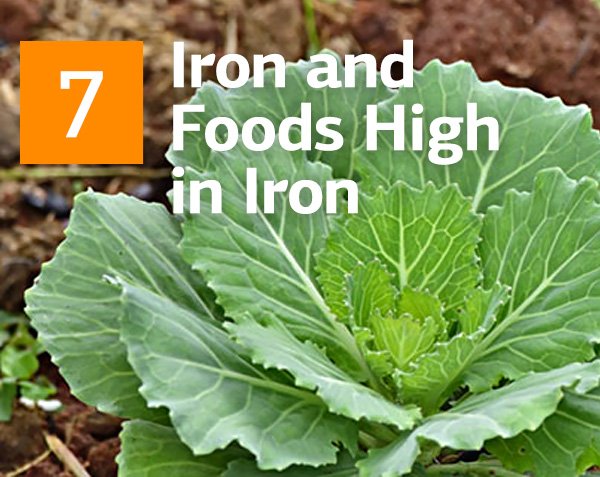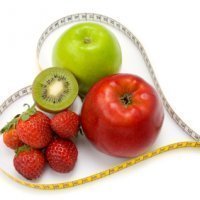Iron and Foods High in Iron
What is Iron for human body?
Iron is mainly contained in our blood, bone marrow, spleen and liver. An adult human body contains 3-5 grams of iron, 75-80% of which is hemoglobin in red blood cells, 20-25% is contained as reserves, and about 1% is in the respiratory elements responsible for the processes of cell and tissue breathing.
Iron participates in such processes as hemoglobin formation, thyroid hormones synthesis and defense against bacteria. It is necessary for cells of immune response and required for the functioning of B vitamins. Iron is a part of more than 70 different enzymes, including respiratory ones and it is involved in removal of external substances, which enter human body.
The daily requirement of iron for men is 10 milligrams and for women is 18 milligrams. The need for iron increases with heavy bleeding during menstruation, pregnancy and lactation.
For optimal absorption iron needs to be consumed with animal protein, vitamin C and other organic acids. So, iron-containing vegetables and fruits, which are also rich in vitamin C and organic acids, are much better absorbed. However, strong tea, coffee and large amount of dietary fiber in the diet, especially bran, prevent iron from absorption.
Long-time heat treatment drastically reduces amount of absorbable iron in foods, so it is best to choose the pieces of meat or fish that can be steamed or lightly fried. In case of fruits and vegetables, you should avoid processing and eat them raw.
Interaction Of Iron with Other Nutrients
Vitamin C, copper, cobalt and manganese beneficially contribute to iron absorption. Excessive doses of calcium, on the contrary, interfere with absorption of iron by our body. It is also worth mentioning that lasting vitamin A deficiency can lead to decrease of iron’s ability to make red blood cells.
Iron Deficiency
The World Health Organization report shows that deficiency of iron is the most widely spread disorder concerning nutrients in the whole world. Especially affected by this issue are women. Another group of risk is children till the age of 2. There are the following symptoms of iron deficiency: weakness, fatigue, headaches, irritability or depression, pain in the heart, shortness of breath, poor appetite and predisposition to frequent infections. Long-term deficiency of iron can cause anemia.
Dietary Toxicity Of Iron
Signs of iron overload in the body are headaches, dizziness, poor appetite, drop in blood pressure, vomiting, diarrhea and kidney inflammation.
Foods High In Iron List
1. Spinach
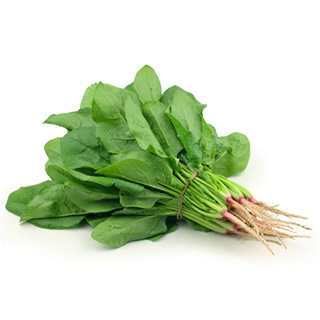
| Spinach | |
| 100 g | 1 bunch (340 g) |
| Iron: 2.7 mg (18% DV) |
Iron: 9.2 mg (61% DV) |
Spinach is a great store of vitamins and minerals. Only a 200 gram serving of spinach can provide your body with 40% of its daily iron need. Therefore, eating this green vegetable is very useful for the prevention of anemia. Spinach also improves immunity, has energizing effect, is useful for treating beriberi and helps people recover from serious illnesses. It positively affects nervous system, helps to cope with insomnia, fatigue, irritability and stress.
Spinach is a leader of leafy green vegetables on the content of protein, which in its form is very similar to animal protein. It is well absorbed by our body. Unfortunately, in a cooked form, spinach is not able to maintain its useful properties more than a day. Therefore it is best to be eaten fresh.
2. Cumin
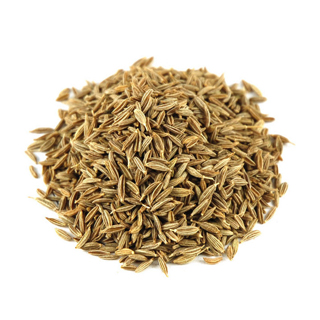
| Cumin Seed | |
| 100 g | 1 tbsp, whole (6 g) |
| Iron: 66.4 mg (442% DV) |
Iron: 4 mg (27% DV) |
Cumin is widely known as a spice and commonly used in baking, a variety of pastries, marinades and alcoholic beverages. But the main value of cumin is its rich composition. It includes more than 100 components, half of which are elements vital for our body. Cumin contains up to 35% of fatty oil and a small amount (about 0.5%) of essential oil. The seeds of cumin also are high in B vitamins, calcium, copper, iron and phosphorus. 2 tablespoons of this spice comprise 50% of our daily iron value. That is why cumin is recommended to be included in meals to treat flatulence, intestinal atony and gall stone disease.
3. Parsley
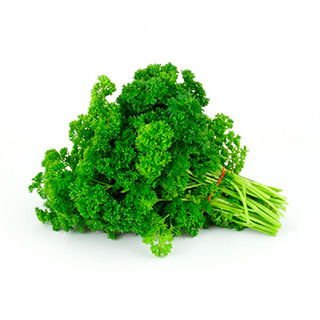
| Parsley, Fresh | |
| 100 g | 1 cup chopped (60 g) |
| Iron: 6.2 mg (41% DV) |
Iron: 3.7 mg (25% DV) |
Parsley has many useful properties. It contains a lot of nutrients, such as phosphorus, potassium, selenium, B vitamins, vitamin C, the content of which is much higher than in lemon. It is rich in a variety of macro- and micronutrients, which have beneficial effect on our body. Only half of a cup comprises 10% of our daily iron need. Parsley is recommended for people who have problems with gums and digestion. It strengthens our immune system and helps to resolve the body's metabolism. Its healthy properties include suppressing depression, restoring strength and energy of our body. It is also worth using for people who suffer from gastritis and anorexia.
4. Turmeric

| Turmeric, Ground | |
| 100 g | 1 tbsp (7 g) |
| Iron: 41.4 mg (276% DV) |
Iron: 2.8 mg (19% DV) |
Turmeric contains phosphorus, iron, calcium, iodine, vitamin C, B1 and B2. It is almost as high in iron as parsley. Useful and medicinal possessions of turmeric are widely known in medicine. In India people believe that turmeric can be used as a remedy against almost any disease. It is a first-rate natural antibiotic. Turmeric has anti-inflammatory, hemostatic and detoxifying properties. It can rapidly remove toxins from the body, so in case you have the poisoning with chemicals, turmeric is recommended as an additive to your every meal. Turmeric powder improves digestion and helps generation of gastric juice and bile. A lot of weight loss medicines include turmeric as a valuable component.
5. Pistachios
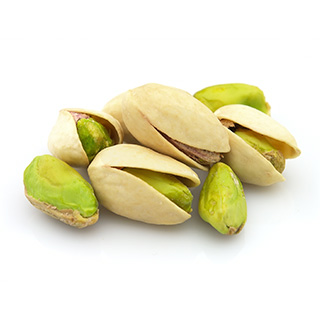
| Nuts, Pistachio Nuts | |
| 100 g | 1 cup (123 g) |
| Iron: 3.9 mg (26% DV) |
Iron: 4.8 mg (32% DV) |
It is worth mentioning that pistachios, unlike other nuts, comprise the most efficient number of amino acids, vitamins and minerals. Besides iron, they are high in copper, manganese and magnesium. 100 grams of these nuts contains 6 milligrams of iron. Pistachios also are rich in B vitamins, especially B6. Ten nuts per day will give you a quarter of the daily vitamin B6 requirement. Moreover, pistachios are rich in vitamin E, which is a famous antioxidant. One of the biggest advantages of these nuts is that they do not require any external interference, which means that the product is environmentally friendly and does not contain any chemicals. The only exception is salted pistachios, which are soaked in salt water and then dried.
6. Asparagus

| Asparagus | |
| 100 g | 1 spear, medium (5-1/4 inch to 7 inch long) (16 g) |
| Iron: 2.1 mg (14% DV) |
Iron: 0.3 mg (2% DV) |
A 200 gram serving of asparagus can provide our body with 30% of its daily iron need. Due to containing lots of vitamin B9, asparagus is recommended to pregnant women, since it contributes to the normal development of the fetus. In addition, useful properties of folic acid help to prevent blood cells and liver diseases. And vitamin A has a positive effect on vision and improves skin condition. Asparagus comprises lots of calcium and phosphorus needed for our bones. It is also high in fiber, which helps digestion and weight loss. Asparagus needs to be cooked very carefully, because, in case of overcooking, its nutrients can be easily lost.
7. Leeks
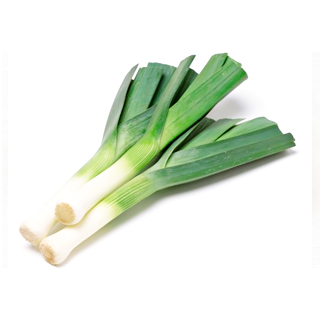
| Leeks, (bulb And Lower Leaf-portion) | |
| 100 g | 1 leek (89 g) |
| Iron: 2.1 mg (14% DV) |
Iron: 1.9 mg (12% DV) |
Leeks have a high content of potassium, calcium, phosphorus and magnesium. 100 grams of these fresh vegetables includes 6% of your daily iron value. This plant is also rich in essential oils and vitamins C, B1, B2, B3 and A. Leek is famous for its unique property, which is increasing amount of vitamin C by more than half in the process of storage. Studies have shown that leeks normalize metabolism, increase secretory function of glands and intestine, and improve functioning of liver and appetite. They are recommended as a remedy against atherosclerosis and obesity. Leeks are used for cooking soups, salads, sauces, and added to meat. They are especially good as an addition to scrambled eggs, and can be fried in butter. These vegetables also go well with cheeses.
